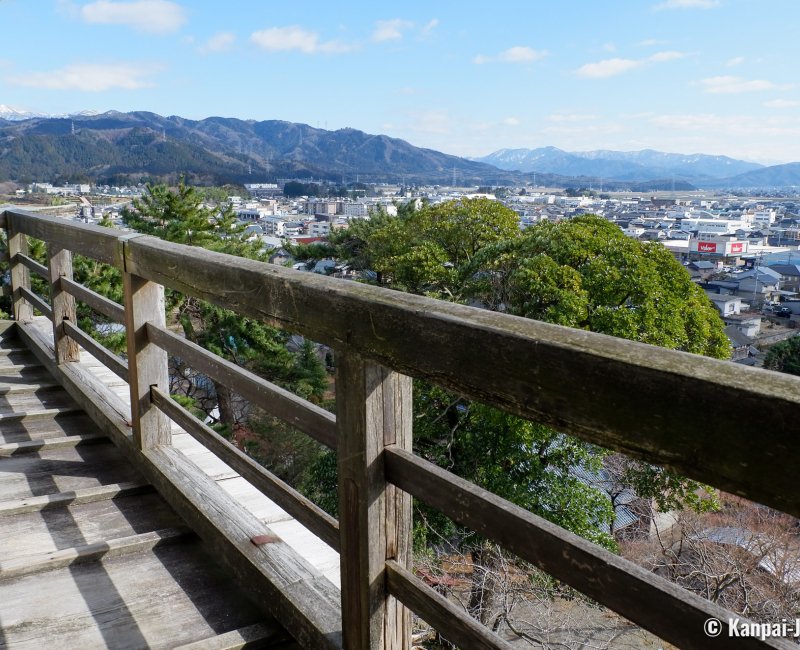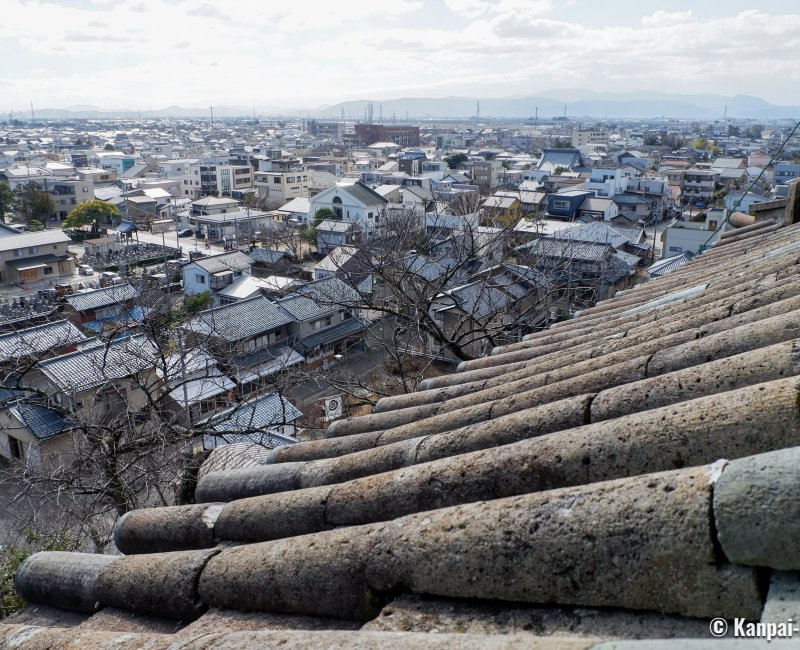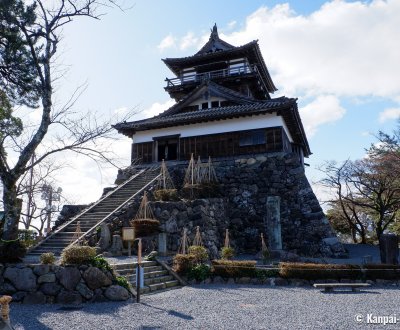Maruoka Castle
The Last Authentic Keep of Fukui
Maruoka Castle is a feudal fortress located in Maruoka, a town part of Sakai City in Fukui prefecture in the west of Japan. Its small keep is one of the last 12 authentic castles of Japan. Standing on a hill, it overlooks a park and its blooming sakura trees in spring.
Maruoka Castle 🏯 is the last fortified monument remaining in the Hokuriku, the area facing the Sea of Japan. It was built in 1576 by Shibata Katsutoyo, an allied of the 1rst unifier of Japan Oda Nobunaga. It was thereafter ruled by the Tokugawa shoguns’ vassals during the Edo period: first by the Honda clan, then from the end of the 17th century to 1871 (the year of the abolition of feudal domains) by the Arima, the descendants of a Christian daimyo lord from Nagasaki.
In 1901, Maruoka city buys the castle and its surrounding land and creates a public park. Nowadays, only the keep and a few pieces of fortifications remain, and the moats were filled over time.
Maruoka’s keep is one of the last 12 authentic castles of Japan. It is often introduced as the oldest, a precedence disputed by Inuyama Castle, with which it shares its look. The wooden keep was however destroyed by the 1948 Fukui earthquake, and reconstructed in 1955 reusing more than 70% of its original materials.
Nowadays, it is standing atop of a small 27-meters high mound. Its steep rock foundation is carrying 3 floors, the highest culminating at a 35 meters altitude and offering a beautiful panoramic view on the area.

A unique and authentic keep
Architecture amateurs may be interested in several characteristics that give a specific charm to this castle:
- The construction doesn't use a central pillar: unlike the keeps built at the time, Maruoka’s was not erected on a central pillar that would support all the floors to the top. Here, the first floor is completely supporting the 2 upper floors.
- The stairways are incredibly steep: steepness is a common characteristic of Japanese castles’ stairways, but Maruoka’s are more like ladders, as their angles are 65° between the 1rst and 2nd floor and 67° between the 2nd and 3rd floor. Ropes have been added to help climb the stairs.
- The roof is covered in stone tiles: tiles are usually made of fired clay, however as the region is quite cold and snowy, stone was chosen for its resistance to frost. Estimations suggest that the roof weights between 60 to 120 tons, that is to say twice the weight of a conventional one. The passing of times is showing through the color variations of tiles, giving away the ones that were changed for renovation or repair.

Hokuriku’s mist castle
Maruoka Castle’s folklore is also rich of legends. One of them says that a human sacrifice (hitobashira) was made to strengthen the keep’s rock foundation that would not stop crumbling. When the daimyo lord didn’t keep his promise to take care of the son of Oshizu, the woman who was buried alive, her spirit caused flooding every year in spring.
The castle is also nicknamed Kasumigajo, or "mist castle," as fog is said to hide the construction from the view of its enemies. Another interpretation of its nickname is linked to Kasumigajo Park that is spreading at the foot of the castle. Its 400 Somei Yoshino cherry trees bloom together in spring, creating a cloud of petals hiding the hill from view and making the keep look as if it is floating in the sky. A Ohanami festival for sakura 🌸 blossom watching is held during the 3 first weeks of April, with light-ups in the evening.
A small folklore and history museum completes the tour, and it displays items related to the successive owners of the castle, such as armor or old documents. Moreover, each year in October the Old Maruoka Castle Festival celebrates the castle with a parade of 400 adults and children disguised as samurais, and with video mapping projections during all the evenings of the festival.
Maruoka is an interesting stopover when exploring Ura-Nihon, the Backside of Japan, with a small original castle that will entertain amateurs of Japanese architecture and history.

